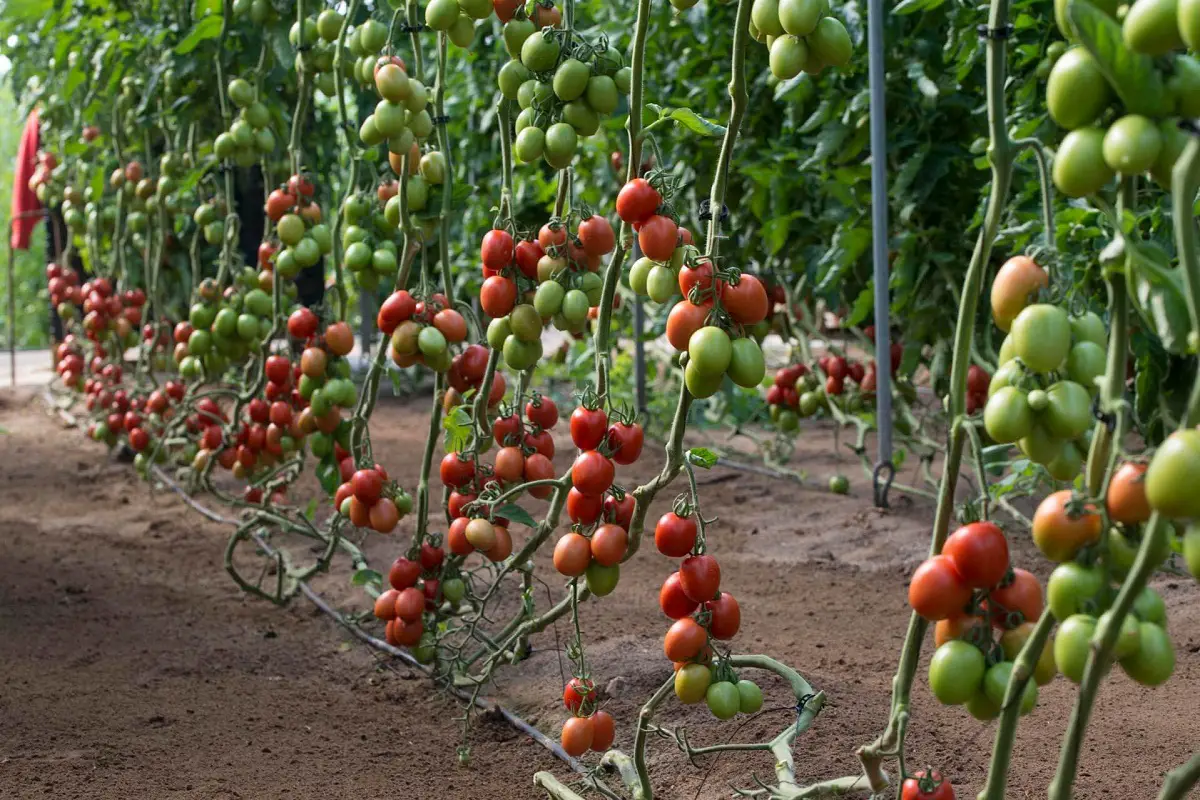

The yellow pear tomato It is one of the varieties available in the market, this specifically was introduced in Europe many centuries ago, coming from Central America or perhaps South America. Consumers prefer it for its particular taste and for the touch of color it adds to meals and salads.
Its yellow color is due to a mutation of one of the genes of the normal tomato, in this the production of lycopene is blocked and prevents the fruit from turning red as it normally is due to the low amount of beta carotene.
Characteristics of the yellow tomato


What is important to know is that they are very rich in micro nutrients and that vitamin C and sugar levels remain intact. Regarding the flavor of the yellow tomato, it is definitely different because the acidity level is lower, which makes it generally have a different taste on the palate.
In this regard, it must be said that eThe flavor may vary depending on the type of yellow tomato you tastethe smallest known as the yellow cherry, usually have a greater sweetness. Also the type of crop influences and in this sense, as long as less irrigation is required, the more nutritious and sweet will be the fruit, this being the case of the variety cherry.
The aroma is also different and is due to the fact that a good part of its components, come from some products that are derived from the synthesis of lycopene and the absence of lycopene in yellow tomatoes makes the aroma different and unique.
The plant is very productive so it is normal to see the clusters of its elongated fruits, which contain between 10 and 15 grams of very juicy, firm and somewhat acidic meat. This is a very high carbohydrate vegetableit is composed mostly of water (93%) with low calorie content, making it ideal for salads and to use as part of a healthy diet.
Carbohydrates favor various aspects such as temperature regulation, muscle activity, blood pressure and neuronal activity among other things. Contains phosphorus, potassium and magnesium, vitamins such as E, C, pro vitamin A, vitamin B1, B3, it is very rich in carotenoids or antioxidants beneficial to the body.
What do you need for cultivation?
It must be planted in full sun, as it has high light requirements. The ideal average temperature during the day is around 25º Cwhile the nocturnal ranges between 15º C and 18º C., and when these become extreme, the plant suffers and its development is affected.


For example, if exceeds 35º C pollination will be seen atFected as the flowers dry and fall, the fruit does not prosper and the tomato harvest decreases. If the temperature is below 12º C the plant stops growing. If it is an area with very low temperatures, it is best to avoid putting the seedlings on the ground, until after the risks of frost are minimized.
Multiplication
The first is collect the seeds during spring and place them in trays or containersunder light and in a controlled and warm environment. When planting, a space of 2 to 3 meters should be left between the plants. The months to do it are from April to the end of July.
Germination occurs between the second and third week at a temperature of 70º F, the soil must be kept moist during this process. The fruits will be ready to collect from July to October.
It is important that the soil is rich in nutrients and for this you can prepare it before sowing, applying compost or fertilizerand if it is a little acidic, the results of the culture will be optimal.
If you are going to grow them in the garden, Keep in mind that the space must have a minimum of 6 hours of sun per dayBefore moving the plant from the pot or container to the ground, you must make a hole twice as wide as the pot.
Care
The plant needs continuous watering, as well as the application of fertilizer to the substrate, preferably liquid the first time and then a dry fertilizer. It is also recommended to use an organic mulchsince it favors water retention and prevents weeds from proliferating.
If the summer is extremely hot, you may need to protect the plant with some shade To avoid damage from too much sun, now if the amount of water allows the substrate to stay moist enough, you will not have problems. You must put stakes to the plant, to prevent the stem from bending and the fruit from reaching the ground where it can be damaged.
Uses
In the case of the yellow tomato, this is a very popular vegetable to use in saladsin the preparation of sauces and countless dishes, as a garnish it is perfect, on skewers and even in drinks.
For its part, yellow pear tomato is perfect for canning loversso they use them when they are at their peak to make preserves using chopped, whole, fried, crushed, etc., being preferred for industries that are dedicated to this but also in homes.
Beyond this use, the yellow pear tomato is very juicy and refreshing for what is included in the preparation of recipes such as gazpacho, among other soups that are eaten cold, it is also perfect to accompany bread and other snacks.
Yellow tomato fun facts


The first record of yellow pear tomato cultivation in Europe is 1.805. In 1847, the first crops were grown in the United States of three types of tomatoes, and among them the yellow pear.
The seed producer Joseph Ellis in 1863 put yellow pear tomato seeds for sale in the cities of Denver and Utah, along with 99 other varieties. This is undoubtedly a variety of tomato that brings versatility and good flavor to the tableideal to vary the menu a bit.
